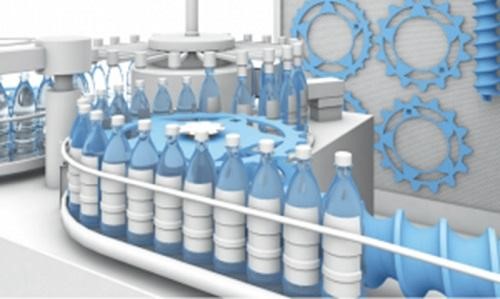Intelligent Solutions for more Agile Processes
2022-12-15
How to update the control architecture?
How to implement Smart Factory in your industry?
In all industries, there is a need for more flexible and individualized production, as well as greater traceability in processes. The overall equipment efficiency, downtime and the demand for shorter production cycles have created the need for smart machines and ultimately smart factories. Now more than ever, this is important in the packaging, food and beverage (PFB) industry to ensure that products and processes are clean, safe and efficient.
We share some examples of how you can implement Smart Factory in PFB industries.
Updating the Control Architecture
- Eliminates analog wiring and reduces costs by 15% to 20%
- Simplifies problem solving
- Allows sensor/device visibility
- Simplifies the modifications
- Reduces terminations
- Eliminates manual configuration of devices and sensors
- Automates the Guided Format Change and Change Parts
Eliminates switching errors
- Reduces planned downtime for making changes
- Reduces product waste from start-up after a change
- Constant positioning at all times
- Ensures that the proper exchange parts are changed
- Predictive Maintenance through IO-Link
Improves diagnostics
- Reduces unplanned downtime
- Provides condition monitoring
- Provides more accurate data
- Reduces equipment slowdowns and stoppages
- Reduces product waste
- Traceability
Delivers accurate and error-free data
- Tracks raw material and finished products
- Accuracy in the date and the batch code, to attend to a possible call for revision of the product
- Allows the integration of robust tags in containers, pallets, and accessories
- Increase security with access control
But… why is all this important?
Converting a manufacturing process into an intelligent one will improve many aspects and cure the pains that may have been encountered in the past. In the PFB industry, downtime can be very expensive due to the fact that the raw material has a short expiration date before it needs to be disposed of. Therefore, the overall equipment efficiency (OEE) is an integral part of any process within PFB.

Simply put, OEE is the percentage of manufacturing time that is truly productive. The implementation of an improved control architecture, the automation of change processes, the use of network devices that have predictive maintenance and the incorporation of RFID technology for traceability, greatly improve the OEE and reduce the time spent on troubleshooting to find a solution to a recurring problem.
Through IO-Link technology and smart devices connected to IO-Link, the time spent searching for the root of a problem is greatly reduced thanks to continuous diagnostics and predictive maintenance. IO-Link systems alert operators to sensor malfunctions and when preventive maintenance is required.
Unlike preventive maintenance, which only captures 18% of machine failures and is based on a schedule, predictive maintenance relies on data to provide operators and control personnel with critical information at times when they may need to perform maintenance in the future. This results in planned downtime that can be strategically scheduled around production runs, as opposed to unplanned downtime that comes without warning and could disrupt a production run.
Reducing the time it takes for a machine to change from one packaging size to another allows the batch to be finished faster than if a manual change were used, which in turn means a shorter production time for that line. Automatic shifting allows the process to be accurate at all times and eliminates the risk of operator error due to more accurate positioning.

RFID traceability can be a very important part of the smart factory for the packaging, food and beverage industry. The use of RFID during the entire process (tracking of raw materials, finished products and containers leaving the facility) can greatly increase the efficiency and performance of the process. RFID can even be applied to identify whether the correct equipment was used or not during the changeover.
Adding smart solutions to a production line in this area improves efficiency, increases production, minimizes downtime and saves money.




